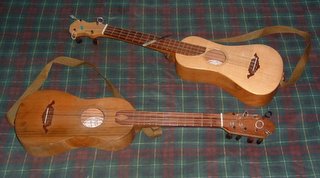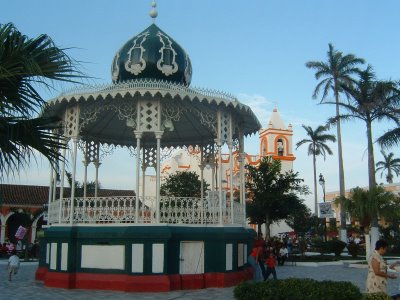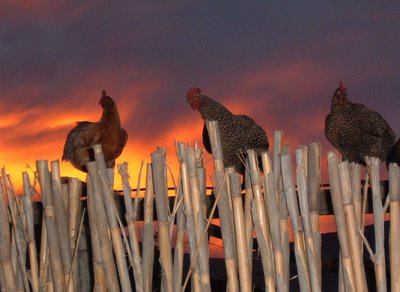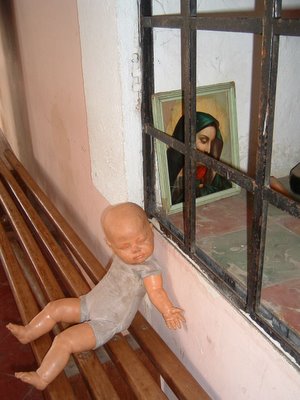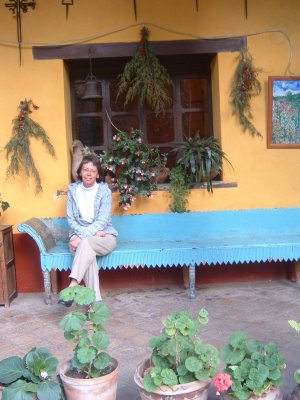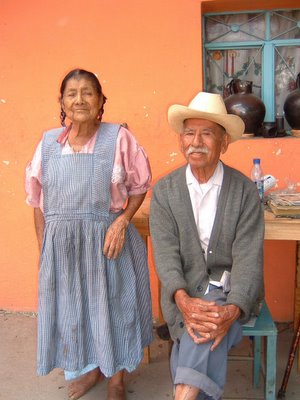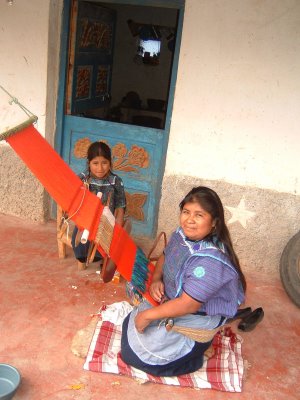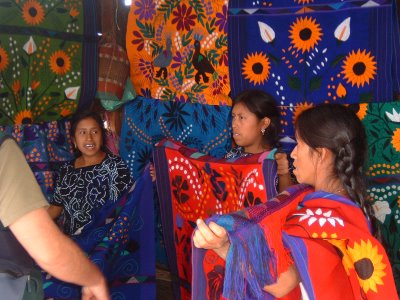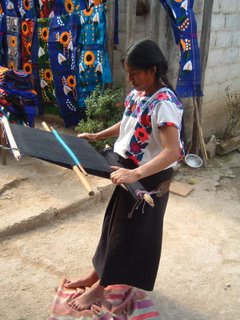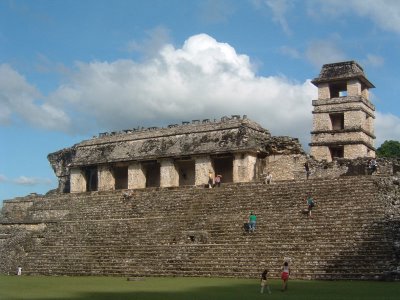
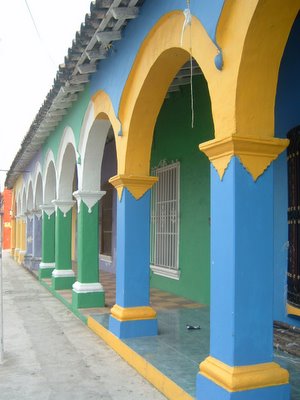
I journeyed for four days to the small town of Tlacotalpan (Tlac..rhymnes with Clock..koh-TAHL-pahn)about an hour or so south of the city of Veracruz, in the state of Veracruz, on the east coast of Mexico,from Jan.28-Feb.2
Tlacotalpan is an Aztec name meaning "place between the waters". It used to be an island between two rivers, now it hungs alongside of the quite wide, Papaloapan river that starts in the Sierra Norte mountains of Oaxaca and empties into the Gulf of Mexico. This city served as a very critical alternate sea port for Mexico, when Veracruz was occupied and under invasion from the U.S. in 1847, and by the French in 1838, and 1864-67.
The streets of this slow, comfortable and humid city are small and with wide pedestrian sidewalks that border right up to the porches and front doors of houses.There are no large walls and facades that cover and hide the homes, as usual in many Mexican towns. Here, as you walk by, you can see right into the salons of the house through large screened windows and decorative wrought iron grillwork.
Tlacotalpan lives out the tropical side of it's personality. Much more casual than Oaxaca and other inland cities, Tlacotalpans behave in-time with the rhythms of living so close to the sea. Slow, regular beats is the tempo of the day, and the night brings on a quicker and highly social dance..cooled off by the evening gulf breeze.
And the people here are more at ease and comfortable with their skin. You see more of it, you see sandals, short skirts, men in T-shirts..and the skin has the characteristic Veracruz regional mixed color shades of the Caribbean and Africa.
The music is what what brought me here, and I will make another blog on that, but I also was there during the Festival of Candlemas, and this attracts many from the state of Veracruz.
The mass of candles, or Candlemass, comes out of the Eastern and Northern European Cathlolic traditions. Candlemass is the last festival in the Christian year that is referenced to Christmas. It marks the end of the Christmas and Epiphany. All the next holidays are referenced to Easter. The formal name of the festival is, Purification of the Virgin Mary, or Presentation of Jesus in the Temple. In Luke 2:21, the holy man Simon reconizes the baby Jesus and calls him " a light for revelation "...and so the tradition of bringing candles to the church to be blessed by the priests and then brought home. Now, there is an extension of this in Mexico, of candles and bringing favorite family saints and other memorabilia.
The music and dance in the region of Veracruz is often fast and free-spirited. Everyone, from musician to audience is likey to add in with a short improvished lyric or dance step.
The laughter is bigger here, the hugs are stronger. Perhaps just like the architecture here, with the new friends that you meet on the streets...you can see past their large, decorative smiles and right into the interior of the person, their salon..rather easily. They invite you right in. The warmth of the tropics perhaps.
Adios, Bruce
